Forget neo-banks: Introducing Australia’s new leading lenders
Australia is leading the way when it comes to the strength and quality of its major Banks on the global stage. A recent analysis by Morgan Stanley of common equity tier 1 capital, that is the highest form of regulatory banking capital as determined by the Bank for International Settlements, found that Australia’s four largest Banks held the top four positions, globally.[1]
This result can be largely attributed to the 2014 Financial System Inquiry. David Murray, the then chair of the presiding committee, recommended the Australian Prudential Regulatory Authority (APRA) set “Australian bank capital ratios such that they are unquestionably strong”. Australia’s banking authority took up the challenge and the rest, as they say, is history.
However, this strategy of prioritising regulatory capital ratios above all else has had a number of unexpected consequences on the lending activities of Australian Banks. Thanks to their favourable capital treatment, the majority of lending done by Banks is residential mortgage loans. The Big Four Banks have a combined $2.46 trillion of loans out to Australian borrowers. 65% of that total is used to purchase an owner-occupied or investment property.

The Banks’ singular focus on residential property has come at the expense of other types of lending. While in the mid-1980s almost two-thirds of all Australian Bank loans were to businesses, they now represent just 31% of bank balance sheets.
This shift towards tighter lending criteria and a
more uniform borrower profile among Banks has resulted in significant portions
of the economy being left without access to important financing. In light of
traditional banks failing to cater to the specific needs of Australian borrowers,
specialised lenders have stepped in to bridge this critical gap.
Non-Bank Lenders
Although still small in absolute terms when compared to Banks, non-bank lenders have grown to become a critical part of Australia’s credit landscape. The Reserve Bank of Australia noted that “non-bank lending supports economic growth by providing an alternative form of funding and increasing competition for lending”.
But what exactly is a non-bank lender? In reality, non-bank lenders are registered financial corporations that perform the same lending activity as Banks and authorised deposit-taking institutions (ADIs). That is, they provide loans to individuals, businesses and other entities at interest rates greater than their funding costs.
However, non-bank lenders are not ADIs, meaning they do not take deposits or provide savings accounts like a traditional Bank. Additionally, they hold an Australian Credit Licence and are regulated by the Australian Securities and Investments Commission.
Banks and ADIs have a range of funding sources. Currently, 60% of Bank funding is sourced from domestic deposit holders,
that is, individuals’ savings accounts.
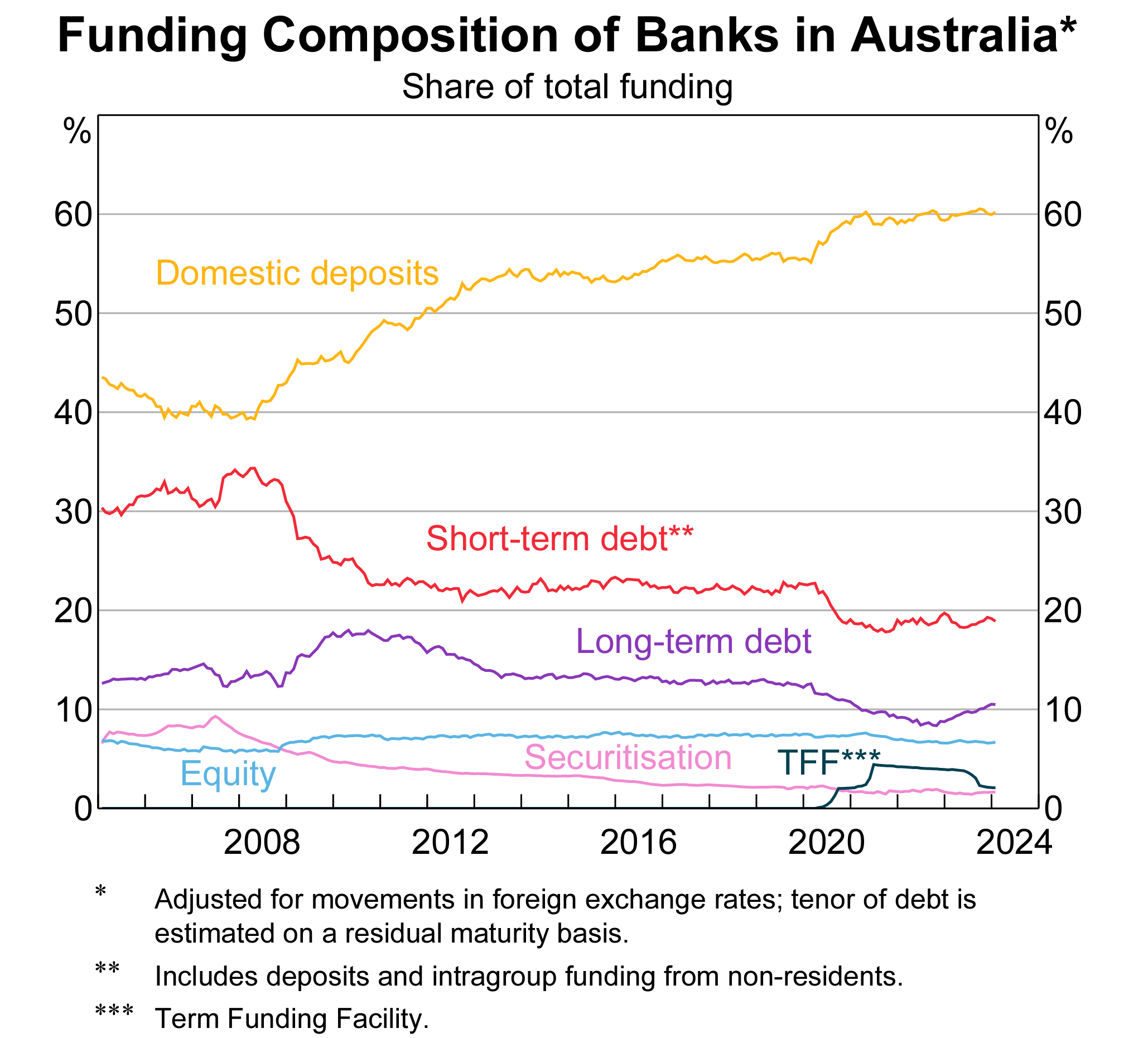
Source: RBA. The Australian Economy and Financial Markets Chart Pack, March 2024.
In contrast, non-bank lenders do not have customer deposits to fund their lending activities. As a result, non-bank lenders rely more heavily on the capital markets for funding.
The majority of non-bank lending is funded
through the issuance of debt securities, which, ironically, are predominantly purchased by
the major Banks. The typical balance sheet of a non-bank also includes loans and business owner equity.
To ensure capital
efficiency, the loans non-bank lenders originate are then packaged up and used as
collateral for bonds, a process referred to as securitisation. This turns a
pool of individually illiquid loans into a tradeable security. Aquasia has written a whitepaper on this process, which can be made available upon request.
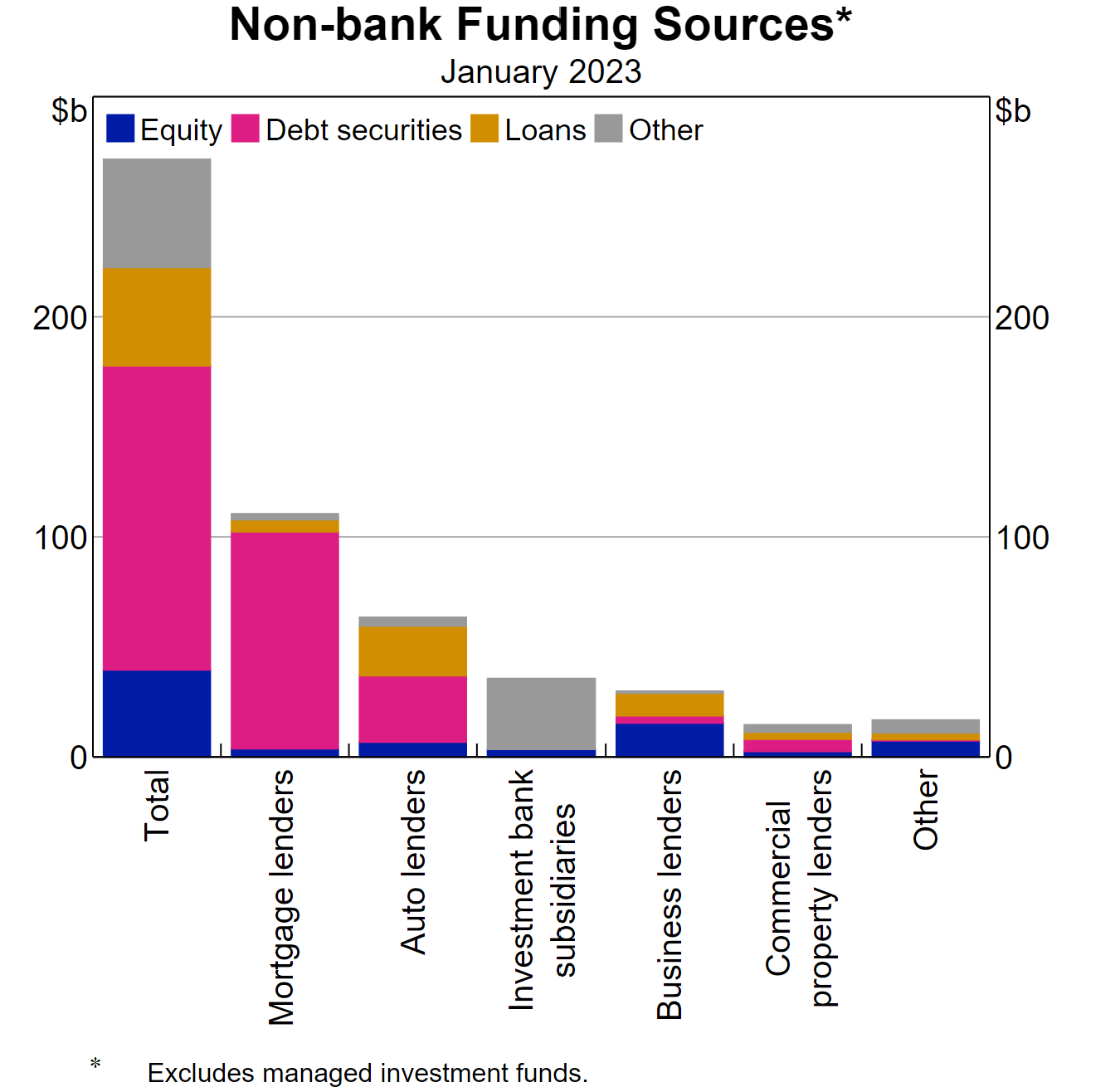
Importantly, non-bank lenders have picked up the business lending slack from the major trading Banks, including equipment and auto financing. Non-bank lenders account for approximately 5% of the total financial system assets, which was as low as 2.5% in 2013. However, non-bank lenders have always punched above their weight in their share of business credit. Currently, they represent approximately 9% of all business credit.
Non-bank lending has
also begun to encroach on the major Banks’ all important residential mortgage
lending. Since 2015, housing growth averaged almost 15% on a six-month
annualised basis; more than twice the rate recorded by Banks.
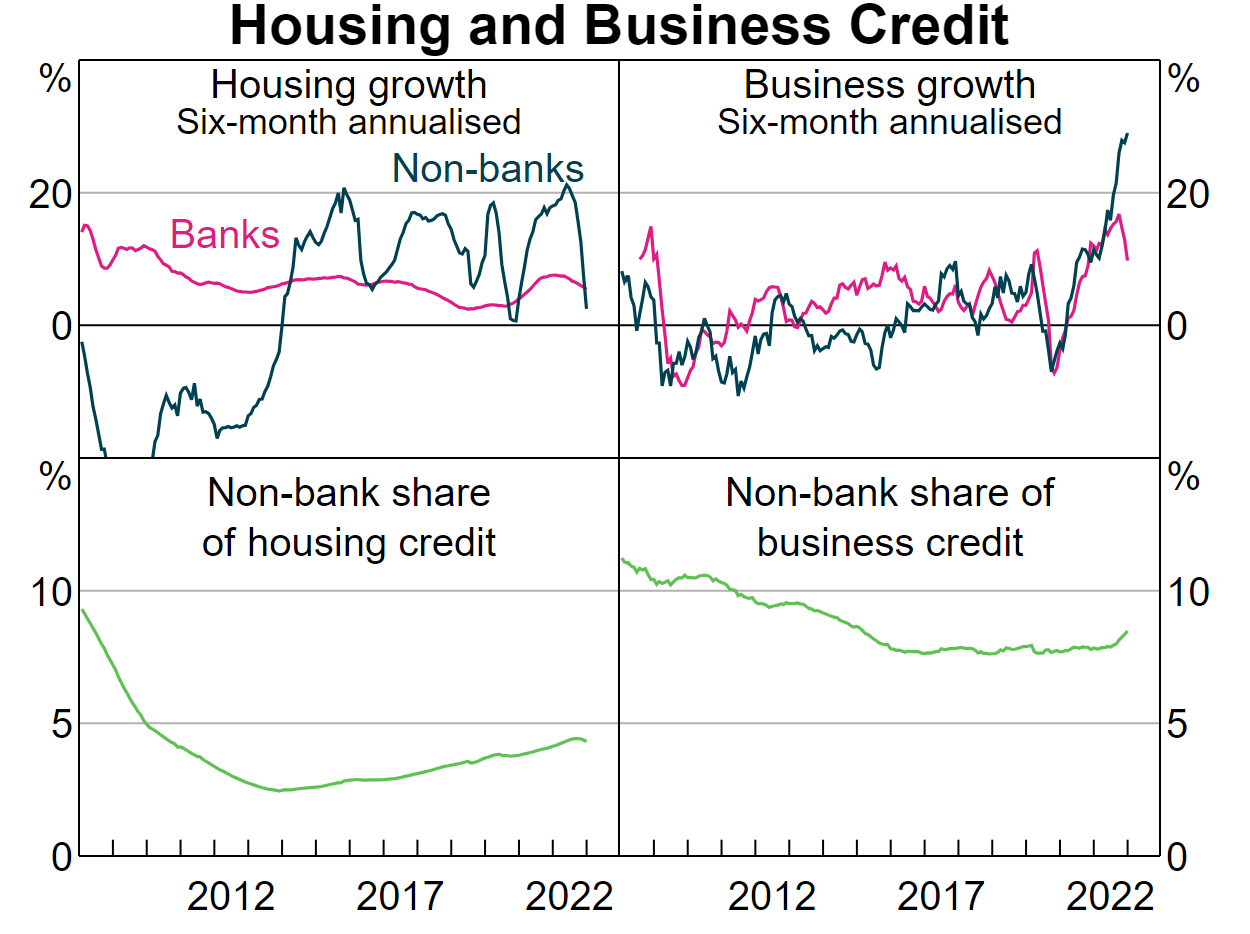
Lending Through COVID
This rise of non-bank lenders over recent years has resulted in these alternative funding solutions becoming a critical component of the lending landscape in Australia. The importance of this sector was underscored by the Federal Government’s fiscal support through the COVID pandemic.
In March 2020, the Government announced the Structured
Finance Support Fund (SFSF), a $15bn securitisation package specifically
designed for non-bank lenders and small ADIs. The SFSF was a reassuring sign of
commitment from the Government and regulators. It was the second such showing
of support for the non-bank sector since their inaugural funding package during
the Global Financial Crisis.
Larger Banks also
received funding during the COVID pandemic. The Term Funding Facility (TFF)
supported the supply of credit through the pandemic via RBA repo facilities.
However, unlike the major Banks, who relied on the TFF for years, confidence in
the non-bank sector was restored shortly after the announcement of the SFSF.
Stalled funding promptly restarted in the securitisation markets and the sector
only utilised $3.5bn of the $15bn funding amount set aside.
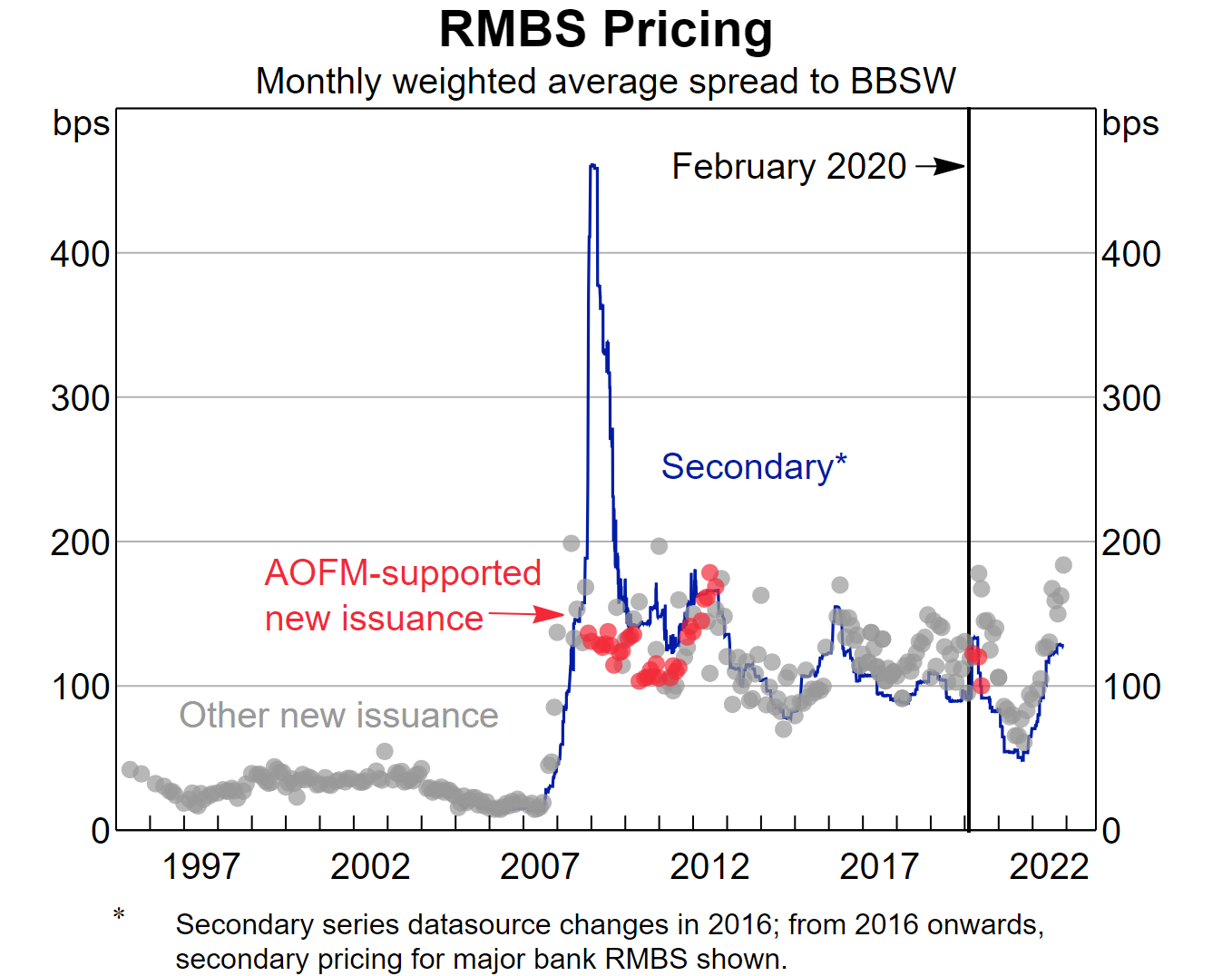
Furthermore, the SFSF
proved a great return on investment for taxpayers. Every single dollar of the
support package that was used has been repaid along with a healthy return on
capital. This is nothing new for quality non-bank securitised assets, however. No
rated Australian residential mortgage backed security in history has ever
suffered a permanent loss of capital. Like any debt security, there is a risk
of default, but historically there’s never been permanent losses for loan note
holders.
Common Questions and Misconceptions
Despite the growing presence of non-bank lenders, a number of common misconceptions remain with regards to the sector.
1. Non-bank lenders only provide loans to borrowers who can’t get loans from major Banks.Traditionally, loans have been thought of in two broad quality categories, prime and non-conforming. Prime represents loans that meet the strict lending criteria of APRA. Meanwhile, as the name suggests, non-conforming loans do not conform to the rigid, predetermined borrower definitions at traditional Banks.
It’s worth noting that non-conforming loans does not always relate to borrowers with chequered credit history. For example, self-employed individuals who often do not have monthly PAYG statements are considered non-conforming. For the 10.6% of Australia’s workforce who are defined as self-employed, Banks automatically decline their applications despite their overall earnings.
That being said, the overwhelming majority of non-bank loans are prime. Only 29% of the current outstanding loan balances of non-bank lenders are classified as non-conforming loans. Meaning that 71% of the loans at non-bank lenders could sit on Bank balance sheets. Non-bank lenders’ often superior service, timing and flexibility are the key factors for prime borrowers preferring these alternative forms of financing.
2. Non-bank loans are riskier than major Bank loans.
When analysing arrears data in mortgage pools, it’s important to take into consideration the quality classifications outlined above. Due to regulatory capital constraints, Banks don’t write non-conforming loans. Therefore, simply comparing arrears between the two sectors is not appropriate.
Accounting for this, non-bank lenders have had lower arrears than the major four Banks over the past five years. The 90+ days arrears for publicly issued prime RMBS from the major four Banks has averaged 0.75%. By comparison, the 90+ days arrears for publicly issued prime RMBS from non-bank originators was 0.27%.
Non-bank lenders are often smaller, employee-owned businesses. This structure delivers a greater level of accountability throughout the underwriting process and ongoing management of loans. While the lending standards in Australia are such that the level of realised defaults is exceptionally low, the data suggest that prime loans originated by non-banks consistently outperform those from the big four Banks.
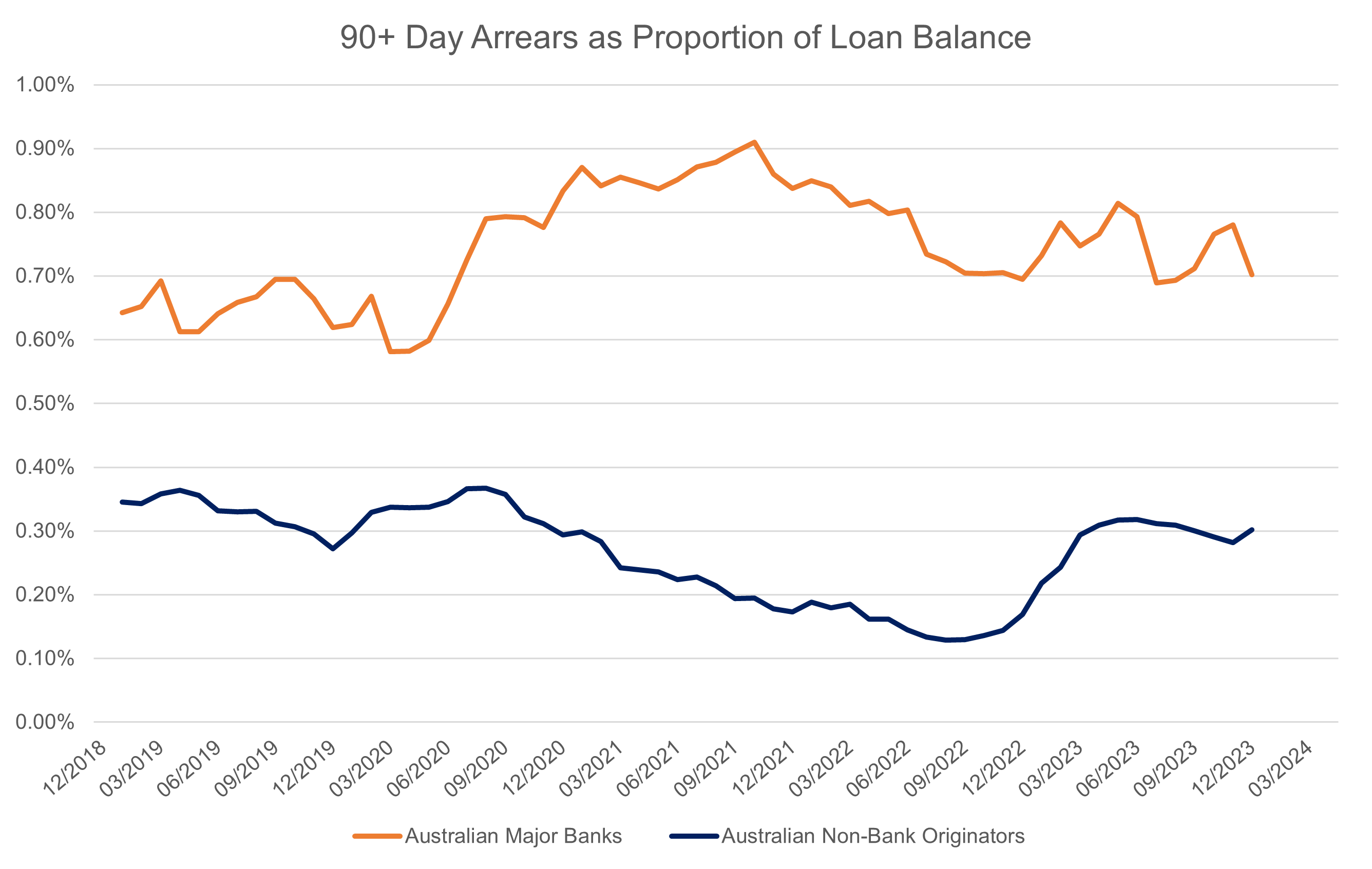
3. Non-bank lenders operate in an unregulated market.
Non-bank lenders are generally regulated by ASIC. However, non-bank lenders are indirectly influenced by APRA requirements through the major Banks’ significant investment in the non-bank sector.
Non-bank warehouse facilities, which act as a
line of credit during the loan origination phase of a securitisation process, are
predominantly funded by the major Banks. As at 31 December 2022, Banks had
nearly $100 billion worth of funding commitments to non-bank warehouse
facilities. This means the non-bank lenders are substantially funded by the major
Banks.
In 2018, APRA
increased the required regulatory capital Banks must hold against loans in warehouse
facilities to be similar to that required if the Bank held those loans directly.
As a result, the major Banks impose their own stricter lending standards onto
the non-bank lenders.
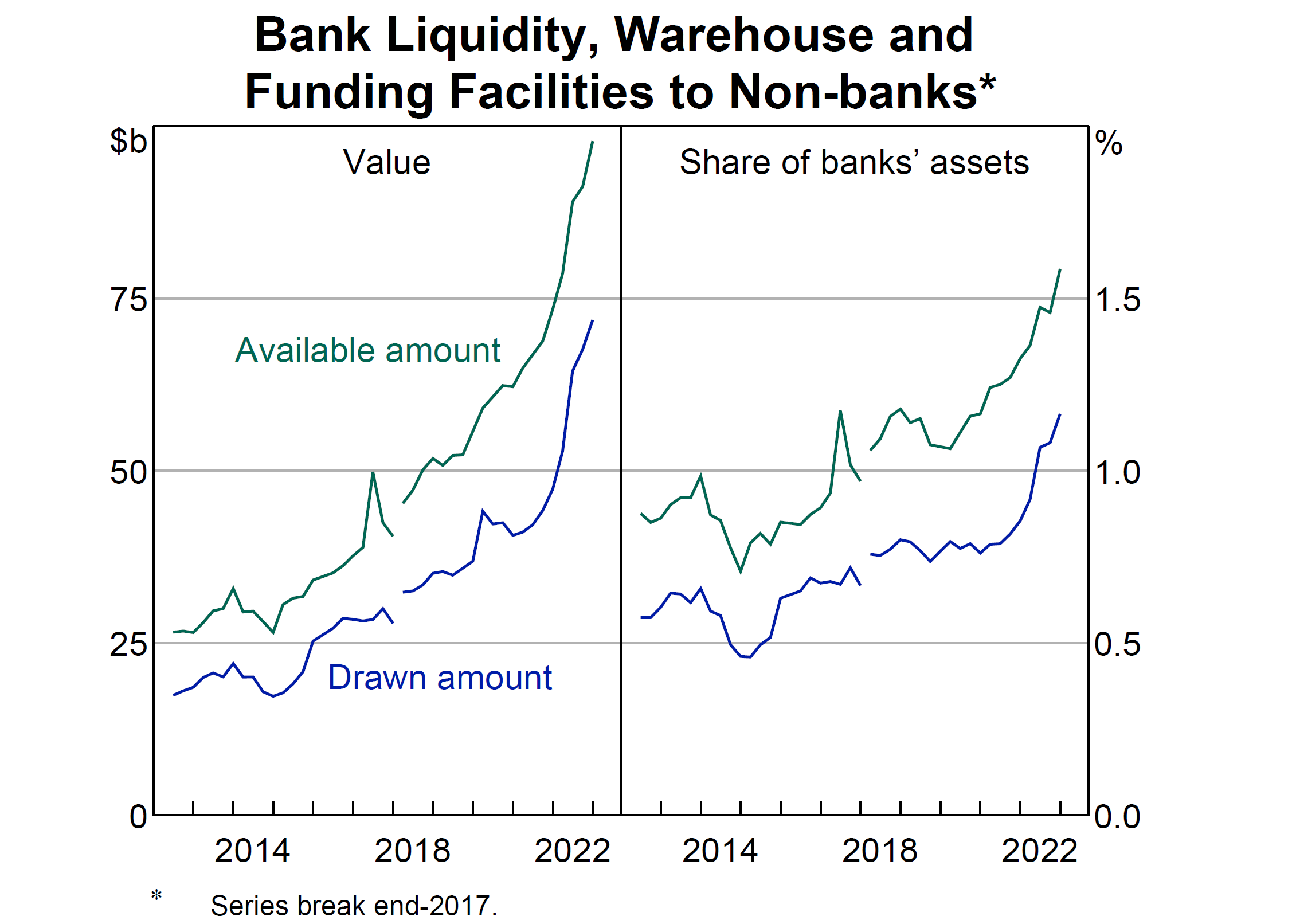
Why This Matters for Investors
Non-bank lenders offer borrowers a compelling alternative to traditional Banks and ADIs. They’ve also managed to better the Banks by many measures. Non-bank lenders are winning critical market share from the Banks, and their growing loan books are, on average, of a higher credit quality when compared on a like-for-like basis. Many write the same loans with lower arrears than major banks.
Importantly, for investors, non-bank’s securitised assets can provide a compelling risk-adjusted return opportunity. Asset backed bonds that non-bank lenders issue through the securitisation process can offer a yield greater than similarly rated corporate bonds issued by the Banks.
Throughout 2023, AA rated bonds issued by major Australian Banks had an average credit spread over the risk-free rate of 0.81%[2]. By comparison, AA rated securitised bonds predominantly issued by non-bank lenders had an average credit spread over the risk-free rate of 2.97%[3]. This means that the asset backed bonds issued by non-bank lenders provided a 2.16% premium for the same credit rating. It’s a handsome premium for investors who have the ability to access this sector of the fixed income market.
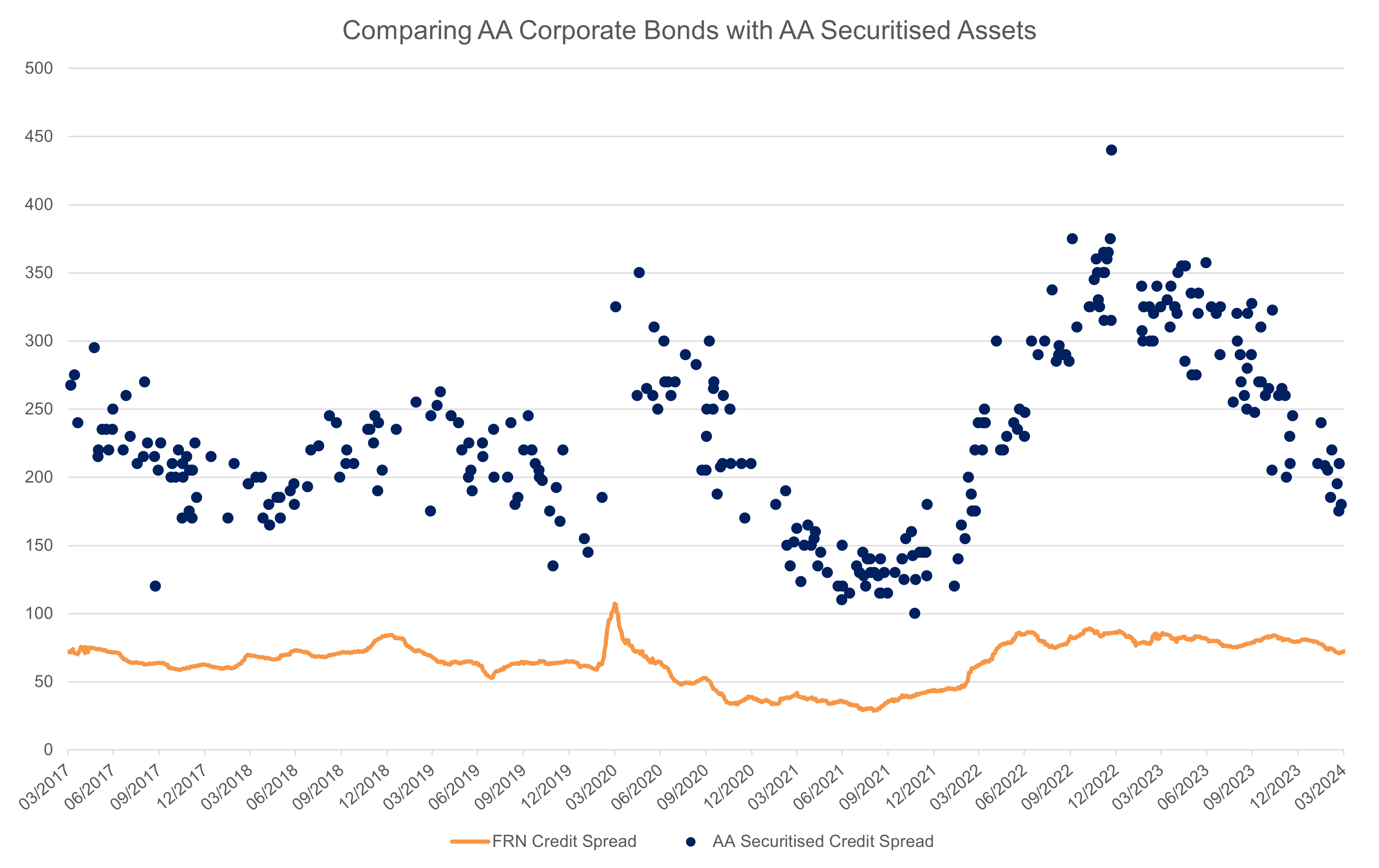
[1] Source: Morgan Stanley. Accessed https://www.afr.com/markets/equity-markets/big-four-lead-global-bank-capital-rankings-morgan-stanley-20230330-p5cwtz
[2] The Bloomberg Ausbond Credit FRN 0+ Yr Index (BAFRN0) is used as a proxy for Australian bank bonds. The index is 95% financial services and has a weighted average credit rating of AA.
[3] Source: Bloomberg, Aquasia. Represents all publicly issued securitised bonds with an initial credit rating of AA as determined by Fitch, Moody or S&P Ratings agencies.
5 topics

